10 Creepy Stories That Will Make You Want to Look Back and Turn the Lights On

Hey there! Today we’re taking you on a trip around the world’s most beautiful medieval towns. It’s a trip down history lane... ready?
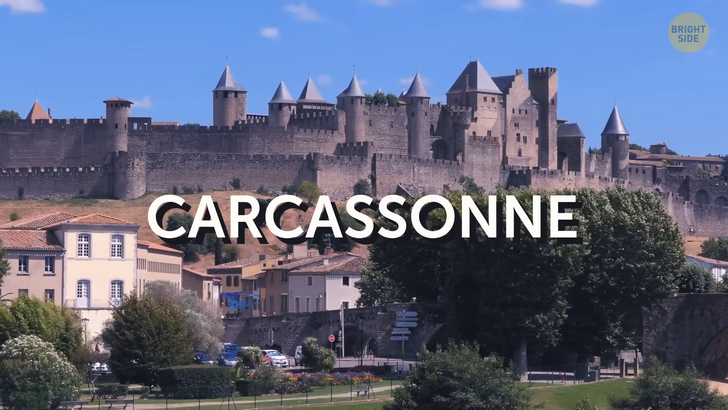
Carcassonne is perhaps the most medieval-looking medieval town there is. What do I mean by that? Well, Carcassonne is one of the few medieval towns that still preserves its fortifying walls around it. Of course, today there is no need to protect the village from the dangers of the outside world.
But the wall gives the landscape an ancient and bucolic touch! Carcassonne is located in the Southern region of France, a region of great food and especially.... You guessed it. Cheese! You can opt to enter the city by one of its many entrances.
But if I were you, I’d choose to go inside through the Twin-Towers entrance, or better yet, the entrance of the city’s castle. To enter the Castle, aka Chateau Comtal, you’ll have to pass through a drawbridge, a stone bridge, and a wooden bridge. The castle was last renovated in the 19th century and is extremely well-preserved. Today, it serves as a museum you can peruse around and learn about medieval France.
Walking around the city, you’ll find many picturesque restaurants where you can sit and enjoy a sip of coffee. The town has over 52 stone towers and over 10 miles of ramparts. All built with massive stones. This city dates back about 2,500 years, so a stroll along Carcassonne will definitely help to take you back in time.
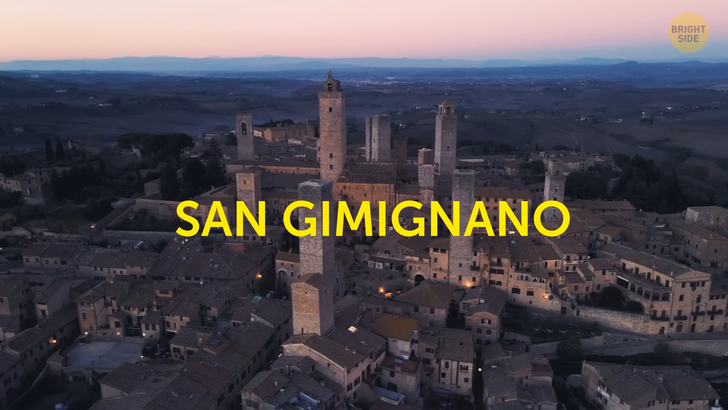
Now, San Gimignano is perhaps the most famous of all medieval towns. You’ll probably recognize it from some Hollywood movie. This town has been around since the 8th Century and you can easily get there. San Giminiano is located an hour’s drive outside of Florence, Italy.
Travelers that are looking for a feel of what Tuscany was like in medieval times, must visit San Giminiano and stroll along the narrow cobblestone streets. The town will win you with its surrounding vineyards and picturesque olive groves. But the architecture is also unique! You’ll easily notice that the city is filled with towers that paint the town’s skyline. Today, San Giminiano boasts 14 medieval towers of the 72 that once existed.
These towers represent the historical practice of rich families competing for status. Whoever had the tallest tower had the most money! Still the same today, huh? Lucky you, if you want to go inside one of the towers, you can! And you’re sure to have an enriching historical experience. Today, you’ll find a museum inside some of the towers, filled with old furniture and artwork from the families that originally lived there.
Another must-see landmark is the San Gimignano 1300, a mixture of a store and a museum. The place holds a miniature model of what the city looked like back in 1300 when the town lived its glory days! The model covers over 290 sq. ft of the original town and was painted by hand! Ah yes, and they say they’ve got the world’s best gelatos. I wouldn’t skip that if I were you.
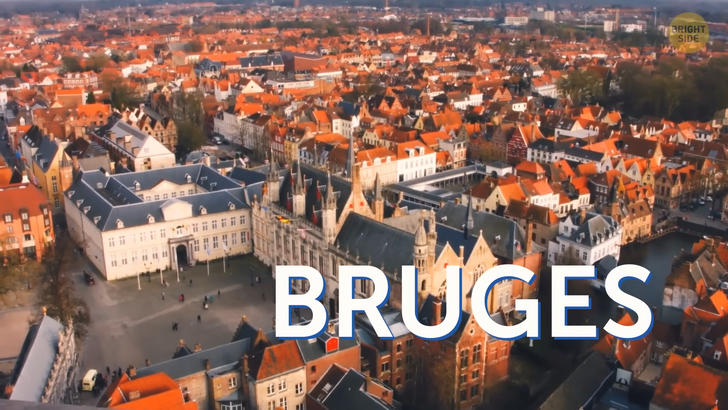
Belgium is home to more than just delicious waffles and chocolate. It’s home to Bruges, one of Europe’s most picture-perfect medieval towns. Bruge’s medieval streets are dreamy to explore. Its delightful cobbled streets give way to cafe-lined squares and meandering canals.
For being one of the most scenic places in Europe, Bruges has gained the nickname ’Venice of the North’. Wandering around this charming city, you’ll find hidden cafes amongst the city’s alleys, perfect for sampling some of these Belgian’s waffles we just mentioned! Oh, and on a curious note.
Did you know that the town owes its name to the Vikings? Bruges was what the Vikings called ’docks’, aka the place where the Nordic men used to park their ships back in the 9th Century CE. The Vikings may have left, but the town remained being called Bruges. Oh, and chocolate lovers, attention here!
In Bruges, you can still find homemade chocolate in most of the stores. So enjoy your visit there to do some sweet tasting! And if you’re looking for a bucolic and romantic time in the city, you can book a chariot ride around the town. It’s a great way to get down all the alleys and pretend you are indeed in another century!
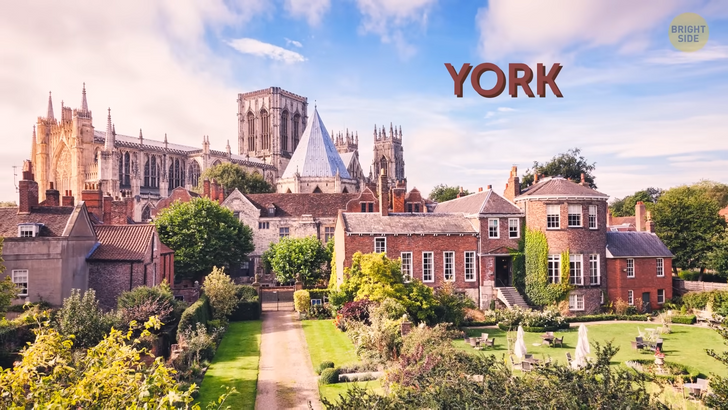
The medieval city of York is an English site to behold. The city’s architecture is a testament to its age. There, you’ll find buildings that reflect the constructions of the Romans and even the Vikings. Like most medieval towns, you’ll be strolling along beautiful cobblestone streets.
Amongst the many landmarks, you’ll find Clifford’s Tower, perhaps one of the most iconic monuments of the city. The stone tower sits above a steep hill, and it was built during the reign of William the Conqueror back in the 9th century. The tour gives you a panoramic view of the medieval city, so it’s definitely worth the visit.
On a similar note, do visit the York Minster. This iconic piece of architecture has an English Gothic influence and 800-year-old stained-glass windows. And take a stroll down the Shambles Market! In medieval times, this part of town was home to a meat market.
But today, it’s where most of the restaurants are located. The market is a great place to wine and dine and find the best antiquities. Most of the brownstone buildings in this area were built in the Tudor era. It seems like a great romantic getaway, in case you’re planning one!
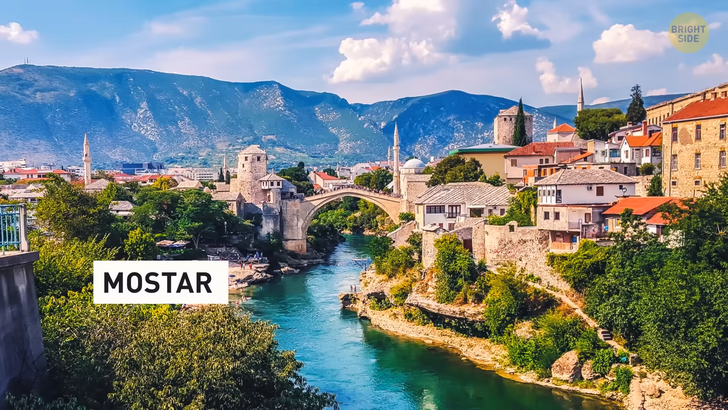
Moving towards Eastern Europe, you’ll find the quaint city of Mostar Located in Bosnia and Herzegovina, Mostar was built near the Neretva River. The most famous and also the oldest landmark in town is the old bridge named Stari Most. If you thought the name of the bridge kind of sounds like the name of the town, well that’s because it’s on purpose.
Mostar actually derives from the word Mostar, which means ‘bridge keeper’. And if you get the chance to cross it, know that you are crossing a 15th-century bridge! The city of Mostar is truly stunning, complete with Ottoman constructions, soaring minarets, and colorful buildings that overlook the emerald waters of the river.
If you stroll along the ancient town bazaar, on the left bank of the river, you’ll get a glimpse of Mostar’s medieval constructions. This street has not changed its look since the middle of 16th century, when they built condos. Nah, just kidding! Oh, and while you’re there you have to go grab Bosnian coffee. I’ll tell you, this is much more than just coffee! This is an ancient and ritualistic practice.
They say Bosnian coffee is much like Turkish one, but even stronger. The secret is in the process: they don’t filter it, but rather mix the ground beans with hot water and let it sit for a while. The taste is strong, and it will come in a beautiful copper cup. You know what they say: “When in Bosnia, do as the Bosnians do!”.
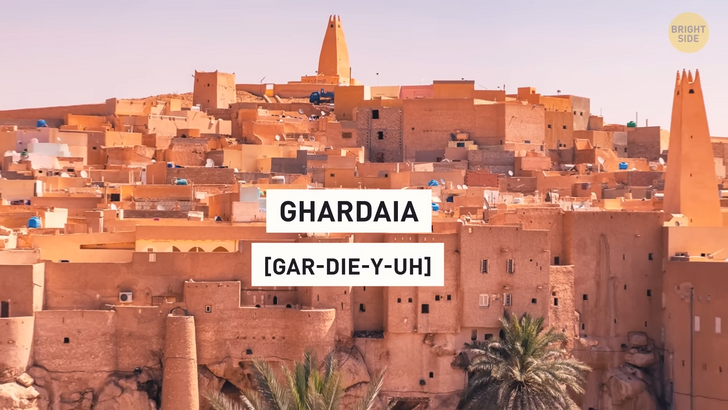
Most of the medieval cities we saw here are in Europe, but not this one. A town called Ghardaia, in Algeria, is a medieval city known for its dazzling and one-of-a-kind architecture. The town was built around the 11th century and is often referred to as “the pearl of the oasis”. Most of the buildings vary in color from white to sandlike tones, because they were mainly built using clay, gypsum, and sand. Adding to the uniqueness of the Ghardaia, the city is located in the Sahara desert, which makes for a beautiful mixture of the urban and desert landscape.
The town is traditionally known for its carpet manufacturing, which has been going on for ages. Manufacturers in Ghardaia hand-produce their own rugs in ancient wooden machines. The result is truly magnificent, as rugs boast vibrant and multicolored patterns. And if you visit in March and April you’ll get to take part in the carpet festival! Can you imagine what that would be like?
Now, walking inside the old town’s market will also give you a feel of the old days. Streets are narrow and packed with different stands selling traditional clothes and goods. You’ll find an infinite variety of spices, herbs, and dates! Yes, there are multiple kinds of dates and luckily for the tourists that visit the town, they are all on display and available for purchase. Yes, here you can set a date to go on a date and eat some dates. The town was considered a UNESCO heritage site in the 1980s and its preservation allows visitors to be fully immersed in ancient traditions.











